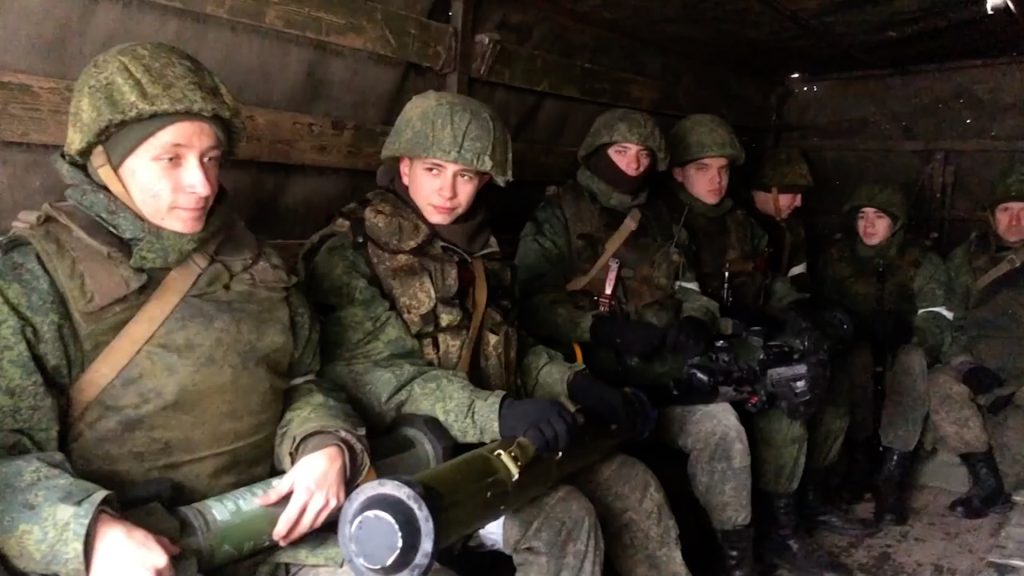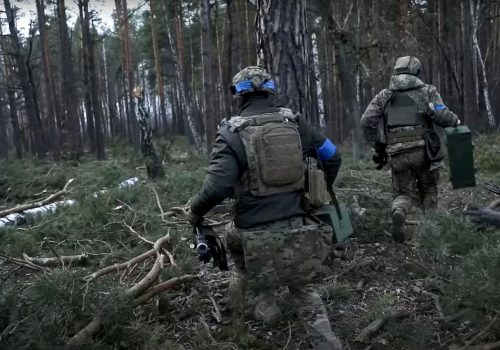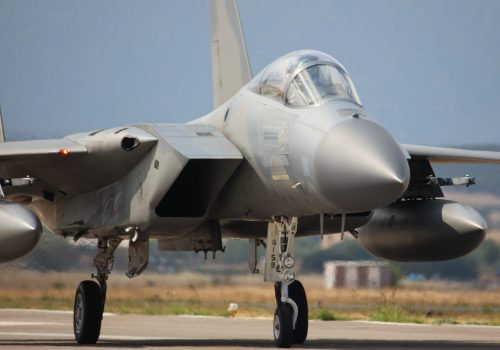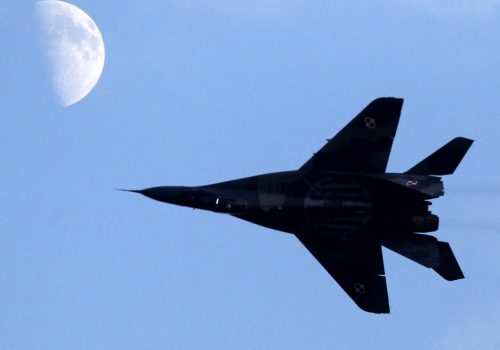By now, it’s no secret: The Russian military is experiencing logistical difficulties in Ukraine—from the now-infamous stalled convoy outside Kyiv to reports of Russian soldiers looting grocery stores for food. Experts have debated whether the problem is due to corruption, poor planning, or both.
While Moscow’s military planners shoulder at least some of the blame, their senior political leadership may have forced utterly unrealistic goals upon them. The original Russian plan was apparently to capture key political, military, and transportation nodes in about three days. This was based on flawed assumptions about Ukraine’s will to fight and its military’s capabilities.
Whatever the root of Russia’s logistical difficulties, approaching the problem from the perspective of a junior US Army officer tells me one thing: By obscuring the true purpose of its military mobilization from its troops on the ground, Russia’s leadership made those difficulties exponentially worse. This is especially true for the Russian forces advancing south into Ukraine from Belarus.
In the dark
Most of those units came from east of Russia’s Ural Mountains, unlike the forces currently attacking Ukraine’s east and south. They lacked immediate ground lines of communication to their bases in Russia and were reportedly told that they were only traveling for a military exercise. Think about that: The soldiers who were packing bags, filling containers, and drawing weapons and ammunition at their home bases did not know they were preparing for a war.
A key tenet of military leadership at every echelon is to create shared understanding. To do this successfully, troops need to understand their task and purpose. This may not seem like a big deal; after all, soldiers are simply supposed to do what they’re told, right? But consider this: If an officer asks a soldier to retrieve a bag and the soldier returns a flimsy Ziploc, that soldier has technically completed their task. Yet giving that soldier a task and a purpose— “Get me a bag so we can pack these heavy tools”—would have produced a much better result.
Even with a clear task and purpose, anyone in the military could tell you: What soldiers are told to pack and what actually gets packed can vary widely. For example, a junior soldier might look at a five-page packing list, spot a certain item, and think, “That’s big, heavy, and I’ve never even used it—there’s no way I’m packing it.” More senior troops might shake their head and think, “Those idiots forgot to add bolt cutters to the list,” and pile them into their truck or container. These problems would only have been exacerbated if the Russian soldiers thought they were going to Belarus for exercises, rather than Ukraine for a kinetic operation.
Reports from captured Russian soldiers and intercepted messages demonstrate that not all of them were even clear about their task: Some thought they were going to Belarus for exercises, while others thought they were going to Ukraine on a quasi-peacekeeping operation. In Russia’s logistics nightmare, one can see the cascading negative impacts—from junior officers down to the newest recruit—of the military leadership’s preference for operational security over shared understanding.
The worst-laid plans
Meanwhile, Russian military logisticians who were told to prepare for an exercise probably would have made a few assumptions.
First: That they would have weeks to conduct reception, staging, onward movement, and integration (RSOI)—a military term analogous to the civilian experience of gathering oneself after going through airport security. You get your bags, re-pack some of your items, grab your watch and your belt, put them back on, put on your shoes, and then walk on to your gate. RSOI is like that—but for thousands of people and trucks and hundreds of containers filled with everything from batteries and wrenches to machine guns and anti-tank weapons.
Second, Russian logisticians also might have assumed that they would only need supplies for one week of actual operations. Indeed, last year’s massive ZAPAD joint exercise between Russia and Belarus included many maneuvers and drills, but only seven days of realistic, “force-on-force”-style combat training. If the soldiers packing containers believed they would only be doing a week of drills, they probably wouldn’t bring an entire month’s worth of combat supplies. Even if they did, the maneuver commanders likely wouldn’t be executing supply discipline during the exercise: as with most militaries, performing well during exercises is a major part of how Russian military officers are evaluated, meaning that the Russian military leadership wouldn’t worry about wasting supplies if it led to a strong performance.
So when Russian troops arrived in Belarus in late January, they got only days instead of weeks to conduct RSOI and then went directly into exercises with Belarus—where they used up a large portion of their supplies. Then they waited… and waited. Finally, they were told that they would be leaving. Their standard operating procedure for packing up might include a deliberate process of separating out useable supplies from unusable ones and carefully annotating which were packed where. But at this point, they had been traveling, living in tents, eating military rations, and dealing with frigid temperatures for weeks. They would be cold, tired, hungry, and in a hurry to get home.
In the US military, this is when the non-commissioned officer (NCO) corps would step up to ensure that everything is done to standard. But as Gen. David Petraeus, the former commander of US forces in Afghanistan, told CNN last week, Russia’s nascent NCO corps isn’t nearly as well-developed. So rather than a disciplined and deliberate reverse-RSOI, the Russian soldiers likely tossed, burned, or sold much of what was left.
The result? Russia launched what may be the largest-scale, most ambitious mechanized invasion since World War II—with convoys that were probably half-empty before they even left Belarus.
It’s too early to definitively conclude whether incompetence and poor planning are ultimately responsible for Russia’s military troubles. As former Marine officer-turned-journalist Ryan Baker pointed out recently in the Washington Post, any military would struggle with an operation of this size. There may still be time for Russia to turn things around: Its switch to siege tactics may inflict enough terror on Ukrainians to force a negotiated end to the conflict on Moscow’s terms. But it will continue running headlong into hurdles at the operational level if it cannot translate the Kremlin’s intent into a key task and purpose for the troops on the ground.
Capt. Ann Marie Dailey is an engineer officer in the US Army. Prior to commissioning, she served as a senior advisor on Russia strategy in the Office of the Secretary of Defense for Policy, US Department of Defense. The views expressed are those of the author and do not reflect the official position of the Department of the Army or Department of Defense.
Further reading
Wed, Mar 16, 2022
Russia Crisis Military Assessment: The weapons Ukraine needs most to win the war
New Atlanticist By
According to our military experts, the war has transitioned from a lightning offensive to a brutal war of attrition.
Fri, Mar 18, 2022
A no-fly zone over Ukraine? The case for NATO doing it.
New Atlanticist By Richard D. Hooker, Jr.
The West stands at the crossroads. It's time to act by establishing a no-fly zone over Ukraine.
Fri, Mar 18, 2022
A no-fly zone over Ukraine? The case against NATO doing it.
New Atlanticist By Kelly A. Grieco
Intervening beyond providing weapons to Ukraine's military and food to the Ukrainian population would only make the nightmare worse.
Image: An image grab from handout footage released by the Russian Ministry of Defense on March 16, 2022, allegedly shows Russian soldiers holding weapons seized from a Ukrainian army weapon depot in the Kherson region. Photo by EYEPRESS via Reuters Connect



